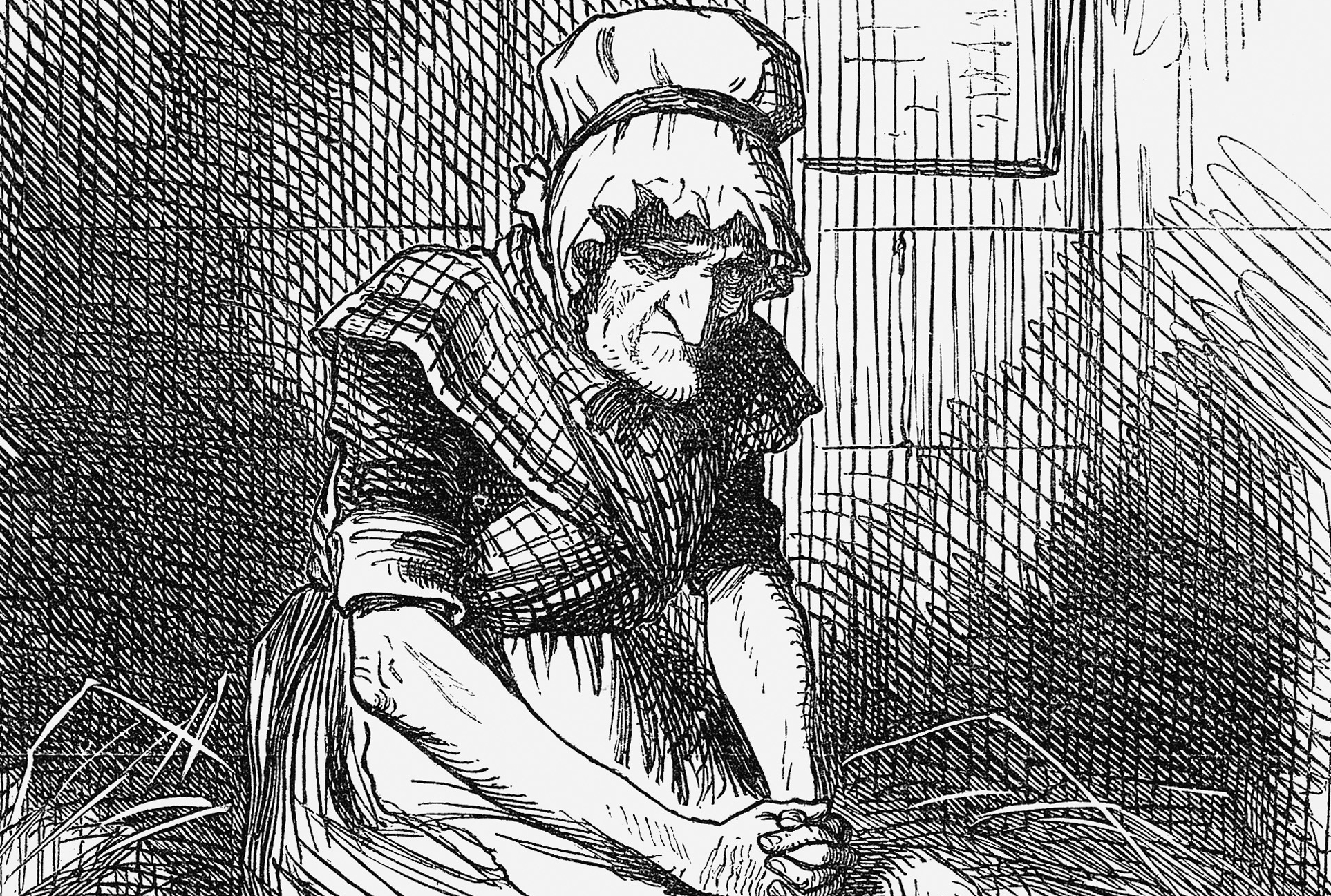These Women Were Utterly Twisted
Throughout history, there have been many terrifying women who have wreaked havoc on people's lives—guilty of the most horrendous offenses imaginable.

Miyuki Ishikawa
Miyuki Ishikawa's story is especially chilling because she targeted innocent children. Ishikawa was a Japanese midwife who ran a maternity home known as Kotobuki San'in. But following WWII, she began doing something unforgivable.
 Unknown Author, Wikimedia Commons
Unknown Author, Wikimedia Commons
Miyuki Ishikawa
At Kotobuki San'in, Ishikawa took in children whose families couldn't afford to raise them. However, in the late 1940s, there were too many babies to care for and not enough foster parents. Therefore, Ishikawa came up with a twisted solution.
 The Mainichi Newspapers Co.,Ltd, Wikimedia Commons
The Mainichi Newspapers Co.,Ltd, Wikimedia Commons
Miyuki Ishikawa
Ishikawa intentionally neglected some of the babies, and many didn't survive. Her fellow midwives were so disturbed by her deranged methods—they quit the maternity home. However, she went a step further.
 United States Department of Defense, Wikimedia Commons
United States Department of Defense, Wikimedia Commons
Miyuki Ishikawa
Ishikawa went so far as to put a price on her penchant for letting the infants perish. For some parents, this payment was less than the amount it would cost to raise their children, so they were paying her to get rid of them. She made a massive profit. However, she didn't act alone.
 The Mainichi Newspapers Co.,Ltd., Wikimedia Commons
The Mainichi Newspapers Co.,Ltd., Wikimedia Commons
Miyuki Ishikawa
One of Ishikawa's co-conspirators was a doctor named Shirō Nakayama, who forged death certificates. Their operation led to the demise of 85 to 169 infants, though the precise number is not known. Though this unhinged midwife was eventually caught, the end of her story might be the most infuriating part of all.
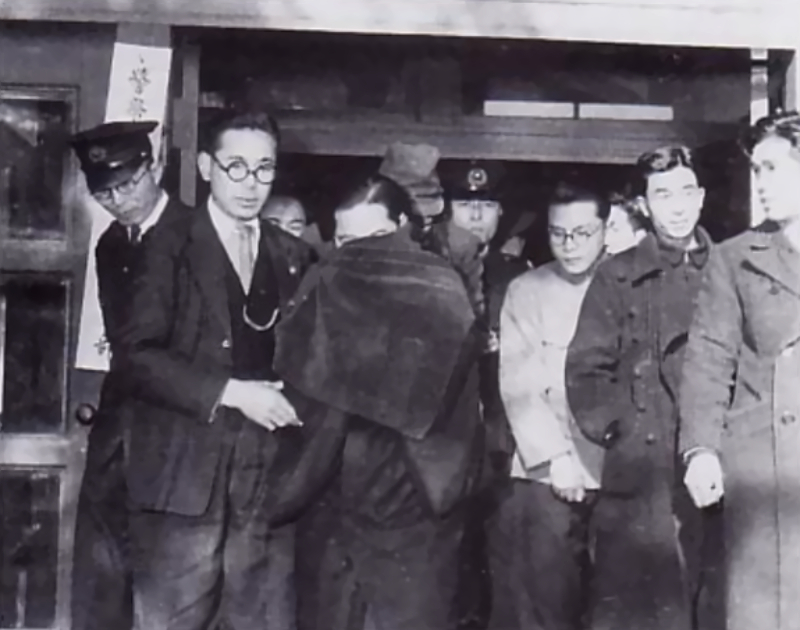 US military Photograph, Wikimedia Commons
US military Photograph, Wikimedia Commons
Miyuki Ishikawa
At her trial, Ishikawa came up with a defense that actually worked. She placed the blame on the parents for giving up their babies, claiming that she was not the one responsible. Though her initial sentence was eight years behind bars, an appeal eventually shortened it to just four years.
 United States Department of Defense, Wikimedia Commons
United States Department of Defense, Wikimedia Commons
Aileen Wuornos
The story of Aileen Wuornos has fascinated people since the 1990s, so much so that her chilling misdeeds inspired the 2003 film, Monster, starring Charlize Theron.
To this day, Wuornos is still one of the most terrifying women in American history. However, her extremely harrowing childhood is likely the reason why she grew into such a disturbed adult.
Aileen Wuornos
Wuornos's upbringing was a downright nightmare. To begin with, her schizophrenic father landed himself behind bars and hung himself, and her mother abandoned her. Then, she and her siblings went to live with their grandparents, and Wuornos suffered unspeakable horrors at their hands.
 Media 8 Entertainment, Monster (2003)
Media 8 Entertainment, Monster (2003)
Aileen Wuornos
After a family friend forced himself on her, Wuornos wound up pregnant at 14, choosing to give up her baby for adoption. But this was only the tip of the iceberg.
When her grandfather kicked her out, she began sleeping with people for money and living in a nearby forest. From here, her troubled behavior only spiraled, leading her to the fateful day of November 30, 1989.
 Media 8 Entertainment, Monster (2003)
Media 8 Entertainment, Monster (2003)
Aileen Wuornos
Aileen Wuornos' first victim was 51-year-old Richard Mallory, who had supposedly offered her a ride. She claimed that she ended his life in self-defense—but this sparked a series of horrifying slayings. Within a year, she became responsible for the demise of seven men, and when the authorities finally apprehended her, she paid a high price.
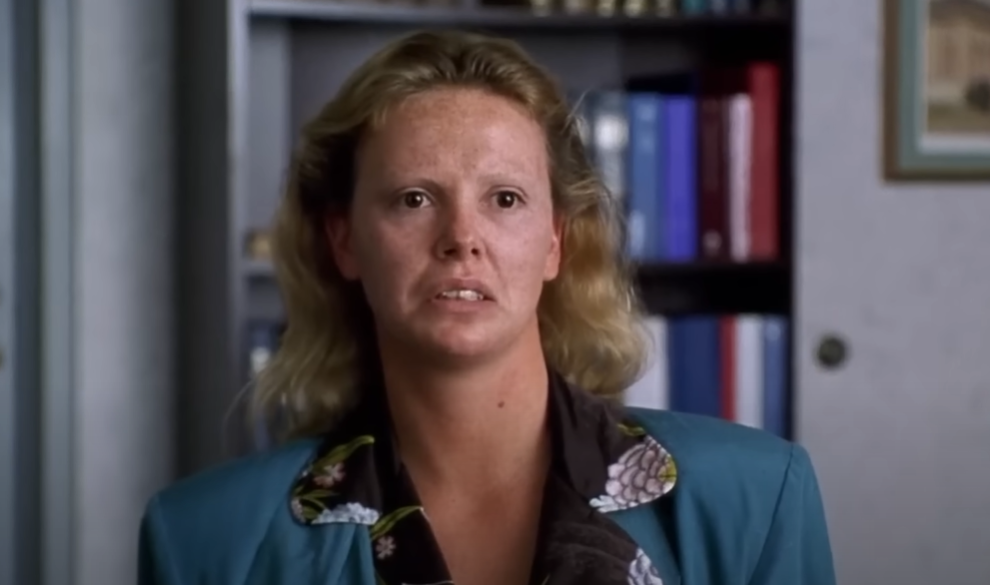 Media 8 Entertainment, Monster (2003)
Media 8 Entertainment, Monster (2003)
Aileen Wuornos
Put on trial for her bloody spree, Wuornos looked her own mortality in the eye. Found guilty and sentenced to execution, she spent her final years on death row. Though her disturbed mental capacity raised some questions, she eventually met her end in 2002 after receiving a lethal injection.
 Media 8 Entertainment, Monster (2003)
Media 8 Entertainment, Monster (2003)
Darya Saltykova
In the 18th century, Darya Saltykova used her noble status to disguise her merciless, bloodthirsty nature. Saltykova was a rich girl, who became even more privileged after she married a nobleman from the Saltykova family. When he passed, she became the owner of his sprawling estate.
But behind closed doors, terror reigned.
 Illuzion, The Blood Lady (2018)
Illuzion, The Blood Lady (2018)
Darya Saltykova
Saltykova was a terrifying woman to work under, especially if you were a servant and a woman. She would ruthlessly torture her serfs, subjecting them to mistreatment that ultimately led to a devastating number of losses.
 Illuzion, The Blood Lady (2018)
Illuzion, The Blood Lady (2018)
Darya Saltykova
Saltykova's connection to the Russian royal court protected her for a long time. Perhaps most horrifying was the fact that the authorities knew something was terribly wrong. People were complaining that people were perishing at Saltykova's estate—but they were either ignored or disciplined for calling attention to it.
 Illuzion, The Blood Lady (2018)
Illuzion, The Blood Lady (2018)
Darya Saltykova
Desperate for true justice, those related to the fallen women decided to come together. They went to Empress Catherine II and brought a petition to her. This finally led to a long-awaited investigation and trial. When the truth finally came out, it was unspeakable.
 Alexander Roslin, Wikimedia Commons
Alexander Roslin, Wikimedia Commons
Darya Saltykova
The investigation brought to light Saltykova's behind-the-scenes horror show. Records and witness accounts proved that 138 mysterious deaths had transpired at her estate—most of them committed by Saltykova herself.
 Illuzion, The Blood Lady (2018)
Illuzion, The Blood Lady (2018)
Darya Saltykova
As punishment for her unspeakable offenses, Darya Saltykova faced public humiliation—but that wasn't all. She also waved goodbye to the rest of her life, as she spent it locked up in a convent cellar until her passing in 1801.
 Illuzion, The Blood Lady (2018)
Illuzion, The Blood Lady (2018)
Madame LaLaurie
Marie Delphine MacCarthy—perhaps best known as Madame LaLaurie—was another rich woman with a dark secret. This socialite from New Orleans lived at the Royal Street mansion, and it was truly a house of horrors.
 Unknown Author, Wikimedia Commons
Unknown Author, Wikimedia Commons
Madame LaLaurie
Around 1836, a number of shocking stories about LaLaurie began to make their rounds amongst neighbors and other residents. It was actually quite a well-known rumor that the mistress of the mansion treated her slaves in the worst ways possible.
 FX Network, American Horror Story (2011-)
FX Network, American Horror Story (2011-)
Madame LaLaurie
According to one story, one of her neighbors had witnessed a 12-year-old girl trying to escape LaLaurie and her vicious wrath. She ran to the roof, where she ultimately fell to her demise. However, one fateful event would expose LaLaurie for the monster she truly was.
 FX Network, American Horror Story (2011-)
FX Network, American Horror Story (2011-)
Madame LaLaurie
When a fire began raging at the Royal Street mansion in 1834, the authorities had no clue what they were about to witness upon arrival. The flames had begun in the kitchen. When they entered the room, officers found the cook with a chain around her ankle, attached to the stove. Her explanation for the fire was beyond tragic.
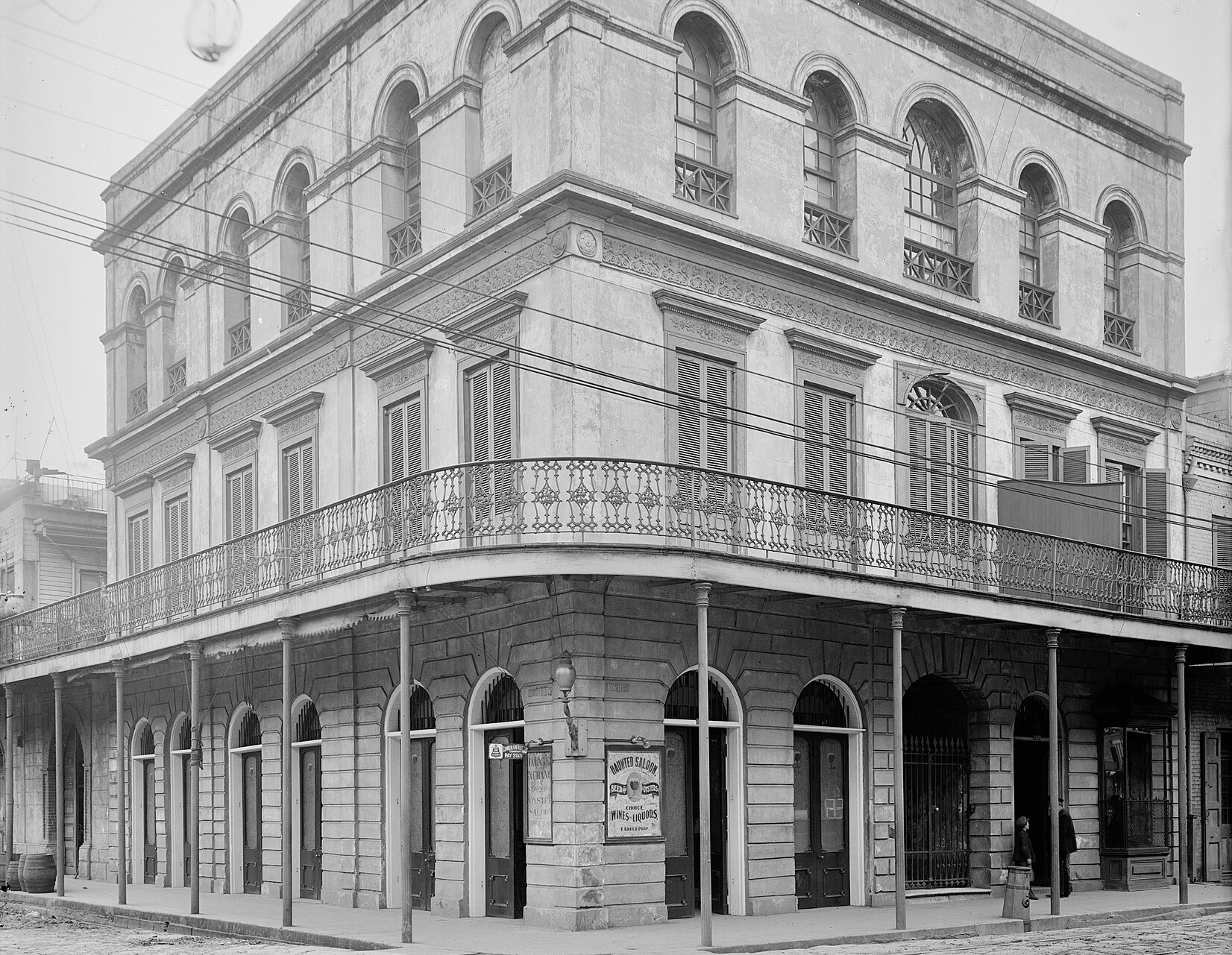 Unknown Author, Wikimedia Commons
Unknown Author, Wikimedia Commons
Madame LaLaurie
The cook explained that she was so afraid of Madame LaLaurie—she had wanted to take her own life. She explained that any slave taken to the highest room in the mansion "never came back". But this wasn't the only horrifying discovery made.
 FX Network, American Horror Story (2011-)
FX Network, American Horror Story (2011-)
Madame LaLaurie
Witnesses of the fire helped evacuate the mansion. However, when the LaLauries obstinately kept hold of the keys leading to the slaves' quarters, the witnesses took matters into their own hands and broke through the door. They couldn't believe their eyes.
 FX Network, American Horror Story (2011-)
FX Network, American Horror Story (2011-)
Madame LaLaurie
Behind that locked door, LaLaurie's worst sins were finally on display for all to see. Seven of her slaves were found in distressing conditions. They had been confined there for a long time. In response to this, a mob descended on the mansion and utterly destroyed it.
 Miguel Discart & Kiri Karma, Flickr
Miguel Discart & Kiri Karma, Flickr
Madame LaLaurie
Weeks later, the Pittsfield Sun made a blood-curdling report: "We understand ... that in digging the yard, bodies have been disinterred, and the condemned well [in the grounds of the mansion] having been uncovered, others, particularly that of a child, were found".
And what happened to the disgraced Madame LaLaurie? She spent the rest of her life in exile in France.
 Louis-Emile Durandelle, Wikimedia Commons
Louis-Emile Durandelle, Wikimedia Commons
Amelia Dyer
In the Victorian Era, Amelia Dyer was a nurse who eventually became known as the Ogress of Reading—a fitting name for the unspeakable offenses she committed over the course of three decades.
 Wells Asylum authorities, Wikimedia Commons
Wells Asylum authorities, Wikimedia Commons
Amelia Dyer
After losing her husband in 1869, Dyer tried her hand at a new line of work—baby farming. Unfortunately, it was as nefarious as it sounded. For a price, she would adopt people's unwanted babies. Allegedly, things went swimmingly at first... and then it all took a turn for the worse.
 Unknown Author, Wikimedia Commons
Unknown Author, Wikimedia Commons
Amelia Dyer
In the beginning, it would seem that Dyer actually tried to properly care for the babies she took in—two of which were her biological children. However, when several of them perished on her watch, she faced a sentence of hard labor.
However, if this punishment was meant to make her a more dutiful caregiver, it failed dismally.
 The U.S. National Archives, Picryl
The U.S. National Archives, Picryl
Amelia Dyer
Going forward, Dyer became utterly unhinged—her mental health was absolutely compromised. She began slaying her "adopted" children and then getting rid of the evidence.
Amelia Dyer
Tragically, she got away with this for quite a long time, and during this period she even spent time in multiple asylums. Something was seriously wrong with Dyer. She was extremely disturbed—and, on one occasion, even tried to take her own life.
However, she couldn't hide from her sins forever.
 Sidney Paget, Wikimedia Commons
Sidney Paget, Wikimedia Commons
Amelia Dyer
In 1896, a bag was found in the River Thames—and its sad contents shed light on Amelia Dyer's awful deeds.
It was the body of an infant girl. The authorities ultimately traced this discovery to Dyer, who—on April 4, 1896—had to face the music. Authorities apprehended her, and the subsequent trial became a downright spectacle.
Amelia Dyer
In the end, Dyer's guilt led her to an execution by hanging. But her offenses were so much worse than people realized. They believed her guilty of a small number of infant fatalities, but in truth, she was likely responsible for the loss of 400 children.
Mary Mallon
During the early 1900s, an Irish woman named Mary Mallon unknowingly doomed every family she worked for. Known best for her infamous nickname "Typhoid Mary," she carried typhoid but had no symptoms.
 Comedy Central, Drunk History (TV Series 2013–2019)
Comedy Central, Drunk History (TV Series 2013–2019)
Mary Mallon
As a cook working in New York City, Mallon began spreading typhoid wherever she went. Between 1900 and 1907, seven of the eight families she worked for fell ill with typhoid. But this was only the beginning.
 Comedy Central, Drunk History (TV Series 2013–2019)
Comedy Central, Drunk History (TV Series 2013–2019)
Mary Mallon
Typhoid was extremely prevalent at this time, and one very wealthy family affected by the disease wanted to get to the bottom of it. They paid a sanitary engineer to look for the root cause, and his investigation eventually led him straight to Mary Mallon.
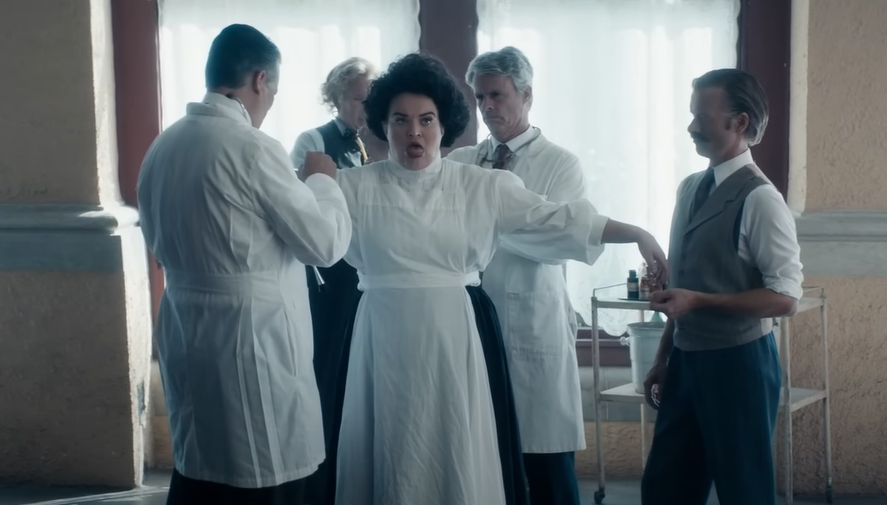 Comedy Central, Drunk History (TV Series 2013–2019)
Comedy Central, Drunk History (TV Series 2013–2019)
Mary Mallon
Found out by city officials, Mallon had no choice but to quarantine herself—and she obliged for almost three years. However, she was able to begin working again after the New York State Commissioner of Health decided that typhoid carriers could stop quarantining.
However, he did have one condition for Mallon: She could never work as a cook again.
 Science Channel, Dark Matters: Twisted But True (2011)
Science Channel, Dark Matters: Twisted But True (2011)
Mary Mallon
After a few years of struggling to make money, Mallon broke her promise and began working as a cook again. But this time, she knew exactly what she was doing. She even used fake names to get by.
 Unknown author, Wikimedia Commons
Unknown author, Wikimedia Commons
Mary Mallon
Again, typhoid outbreaks cropped up wherever Mallon went—be it spas, hotels, or restaurants. However, her actions reaped the worst consequences when she began working at a maternity hospital.
 Jeff G., CC BY 2.0, Wikimedia Commons
Jeff G., CC BY 2.0, Wikimedia Commons
Mary Mallon
After her stint at the maternity hospital, 25 people fell sick—and even worse, two of them didn't survive. Once again, an investigative team followed the breadcrumbs straight to Mary Mallon's door.
 National Library of Medicine, CC BY-SA 4.0, Wikimedia Commons
National Library of Medicine, CC BY-SA 4.0, Wikimedia Commons
Mary Mallon
This time, there would be no escaping quarantine for Typhoid Mary. She lived out the rest of her days on North Brother Island.
 National Library of Medicine, Wikimedia Commons
National Library of Medicine, Wikimedia Commons
Leonarda Cianciulli
In Italy, Leonarda Cianciulli was best known as the Soap-Maker of Coreggio—and for an extremely twisted reason. She turned her three victims into soap and used their blood to make teacakes. But what drove Cianciulli to such a chilling offense?
 Unknown author, Wikimedia Commons
Unknown author, Wikimedia Commons
Leonarda Cianciulli
It seems that Cianciulli was an extremely superstitious woman. She believed that her marriage had been cursed by her mother, who hadn't approved of the match. And, when it came to building her family, she was very unlucky.
 Luca Brinciotti, Leonarda (2016)
Luca Brinciotti, Leonarda (2016)
Leonarda Cianciulli
You see, though Cianciulli got pregnant 17 times, she couldn't bring three of her babies to term. On top of this tragedy, 10 of her surviving children didn't make it to adulthood. In the end, she only had four of her children left—and was terrified that they too would slip through her fingers.
It was this overwhelming fear that would eventually lead her to the most evil deeds imaginable.
 Luca Brinciotti, Leonarda (2016)
Luca Brinciotti, Leonarda (2016)
Leonarda Cianciulli
Cianciulli's life turned upside down in 1939, with the beginning of WWII. The conflict threatened the life of her favorite child, her eldest son Giuseppe, who joined the Royal Italian Army. Completely devoted to keeping him safe, she leaned into superstition.
This time, Cianciulli wholly believed that to keep Giuseppe protected, she would have to offer up some human sacrifices.
 Monteforti Family, Wikimedia Commons
Monteforti Family, Wikimedia Commons
Leonarda Cianciulli
For her unfortunate sacrifices, Cianciulli targeted her neighbors. Her very first victim was Faustina Setti, who she manipulated before ending her life with an ax. However, it was what Cianciulli did after this gruesome act that makes her story even more shocking.
 Luigi Comencini, The Murder Hospital (1950)
Luigi Comencini, The Murder Hospital (1950)
Leonarda Cianciulli
Cianciulli used Setti's body to not only make soap, but also teacakes that she served to guests and ate herself. Her next two victims were also women, whom she slayed in a similar way. Though her process of manipulation may have been different, the end result was the same: soap and sweet buns.
In the end, though, she didn't get away with these offenses.
 Unknown author, Wikimedia Commons
Unknown author, Wikimedia Commons
Leonarda Cianciulli
Eventually, the disappearance of Cianciulli's victims was traced back to her. During the investigation, a shadow of suspicion hovered above her beloved son Giuseppe, causing Cianciulli to finally come forward with her shocking confession. She spent three decades behind bars, as well as three years in an asylum.





